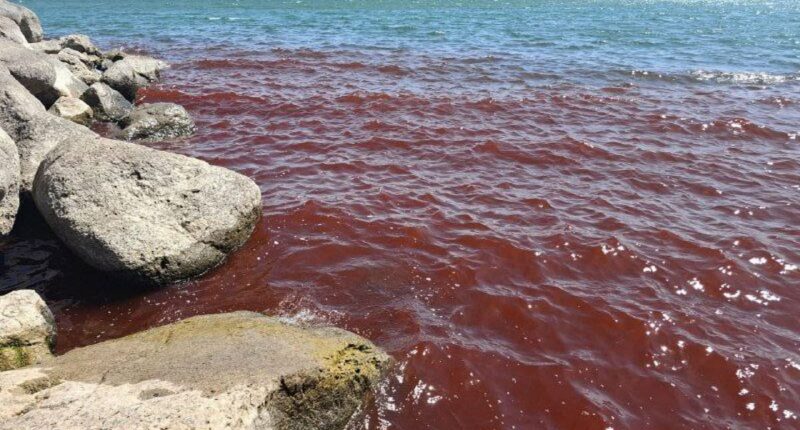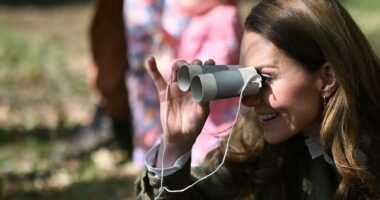Share this @internewscast.com
The biblical Sea of Galilee has mysteriously turned a vivid blood-red, leaving locals rattled and warning of a ‘bad omen.’
Onlookers were amazed as they witnessed deep red waves washing ashore, with some likening this strange event to the ten plagues described in the biblical tale of Exodus.
According to scripture, the curse saw the Nile’s waters struck by Moses’ staff at God’s command, turning them to blood in a divine act of judgment.
“This is what the Lord says: By this, you will know I am the Lord. Watch, as I strike the waters of the Nile with the staff in my hand, and they will turn to blood,” states Exodus 7:17-21.
This dramatic event quickly went viral on social media, leading many to speculate it was a sign of the End Times. However, scientists pointed to a more earthly cause.
Israel’s environmental ministry clarified that this month’s occurrence resulted from a green algae bloom in the lake, which turns red due to a natural pigment accumulating under bright sunlight.
The pigment is harmless, officials stressed, and tests show the water is safe for swimming, despite its unsettling hue.
Research by the Kinneret Research Laboratory revealed that the algae present in the area were non-toxic, with no health hazards or allergic reactions reported among those who came into contact with it.

The Sea of Galilee in Israel unexpectedly turned crimson this month, prompting concerns of biblical warnings. Nonetheless, officials confirmed that a bloom of green algae had caused the waters’ transformation.
The discoloration was caused by Botryococcus braunii, which is found in various aquatic environments like freshwater and brackish water bodies worldwide.
It’s a green microalga known for producing significant amounts of hydrocarbons, which are similar to crude petroleum and can be used for biofuel production.
The phenomenon is caused by a natural buildup of pigments from certain algae, likely due to a bloom of microscopic organisms like cyanobacteria or dinoflagellates.
These organisms produce vivid red colors when conditions such as warm temperatures, nutrient-rich waters and sunlight are present.
While natural, the red waters have deep symbolic resonance for many Christians and Jewish communities, given the lake’s biblical significance.
In the New Testament, the Sea of Galilee was the setting for many of Jesus’ miracles, including walking on water and the miraculous catch of fish.
It was also where he fed five thousand people with a few loaves and fish and called Peter, Andrew, James, and John to be his disciples.

The Book of Exodus describes the Ten Plagues of God. The first the curse saw the Nile’s waters struck by Moses’ staff at God’s command, turning them to blood in a divine act of judgment

The Sea of Galilee, also called Lake Tiberias, Genezareth Lake or Kinneret, is a freshwater lake in Israel.
In 2021, a pool of water located close to the Dead Sea in the biblical region of Moab, modern-day Jordan, mysteriously turned blood red.
The blood-red pond is located along the eastern shores of the Dead Sea, an area believed to be the site of the legendary cities of Sodom and Gomorrah, which, according to scripture, were destroyed by God for their wickedness.
The images also sparked a furor on social media, with blood red waters carrying much significance in the Old Testament as one of the 10 plagues God cast upon the Pharaoh of Egypt to free the Jews from slavery.
The Bible recounts that God sent ten plagues upon Egypt to persuade Pharaoh to free the Israelites from slavery.
The first plague turned the Nile to blood, killing fish and poisoning the water, said to have occurred when Moses struck the Nile with his staff.
Following the first plague, Egypt was struck by swarms of frogs, lice or gnats, and flies, along with deadly livestock disease and painful boils.
A severe hailstorm, locust swarms, three days of thick darkness, and finally the death of every firstborn son forced Pharaoh to release the Israelites.
The region around the Sea of Galilee has seen other dramatic events, such as the high salinity of the Dead Sea.
















